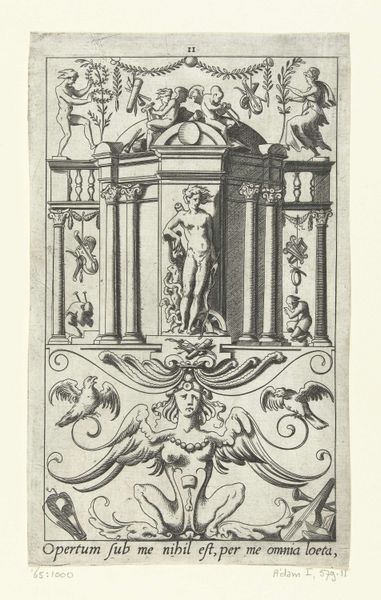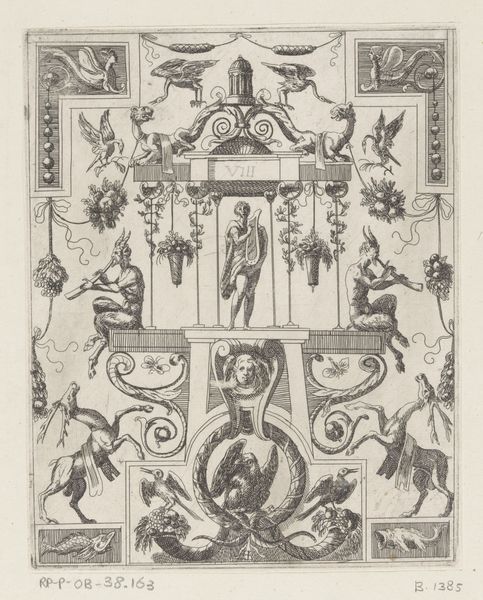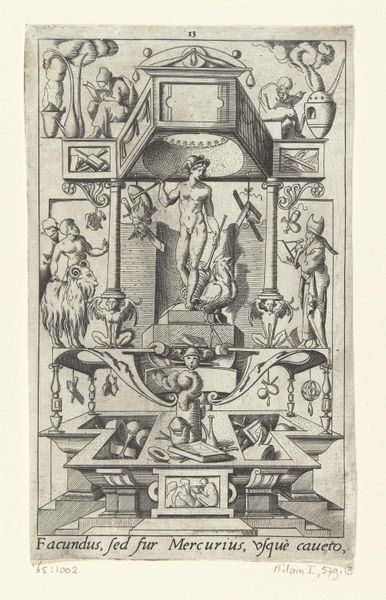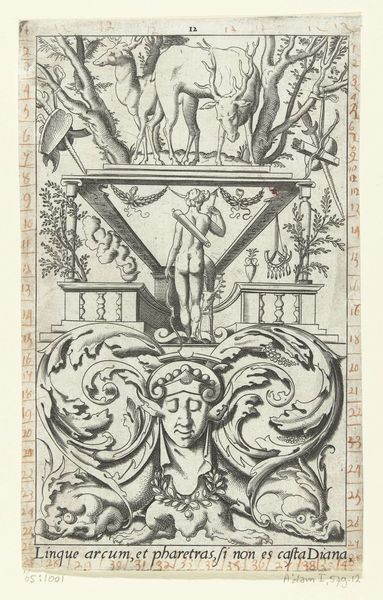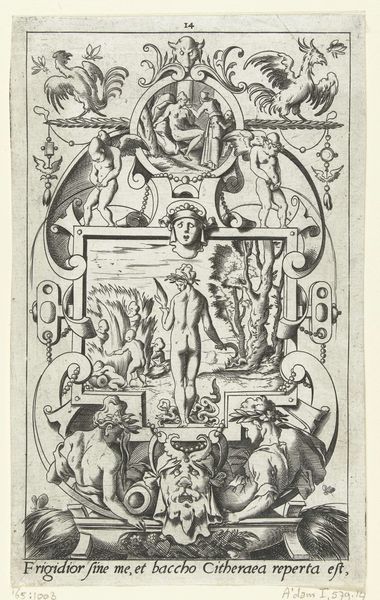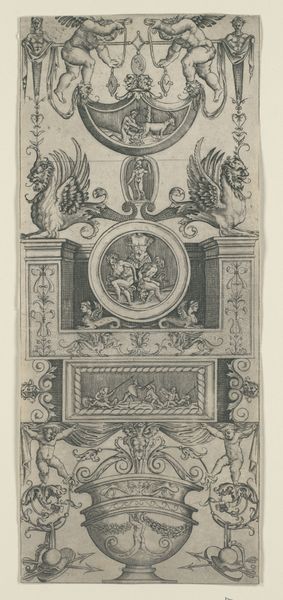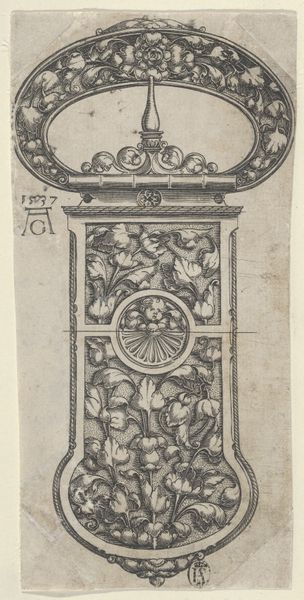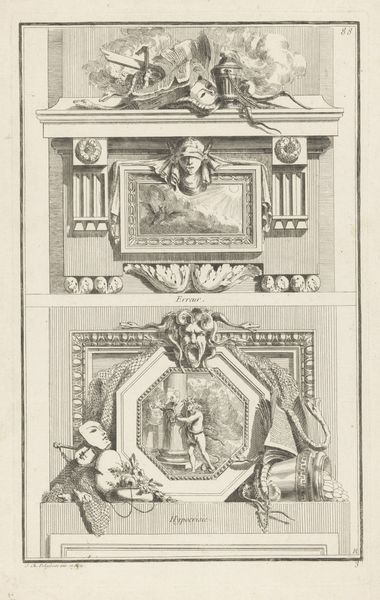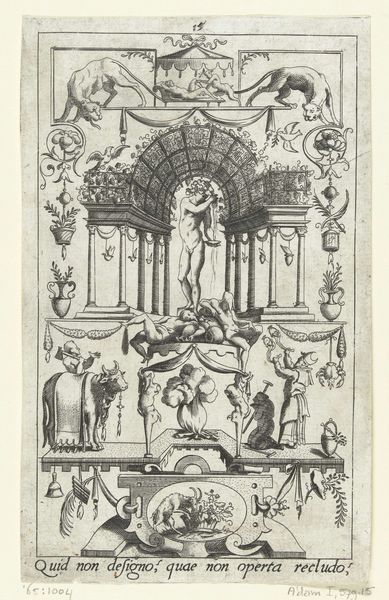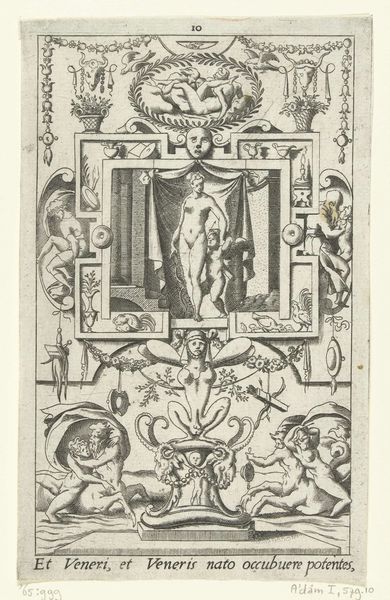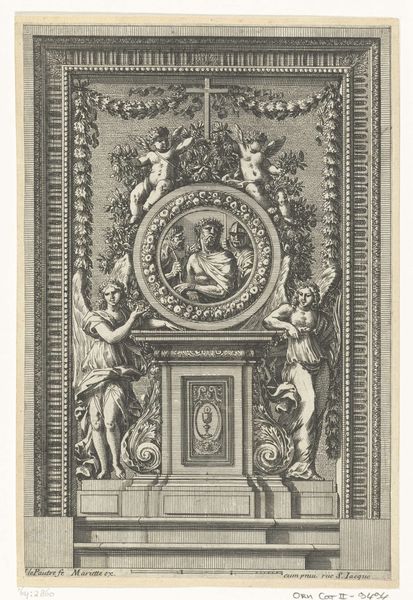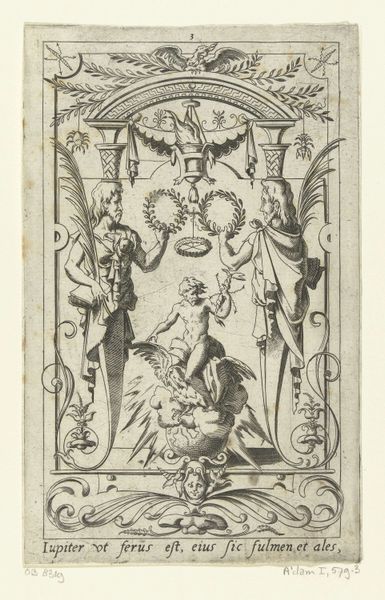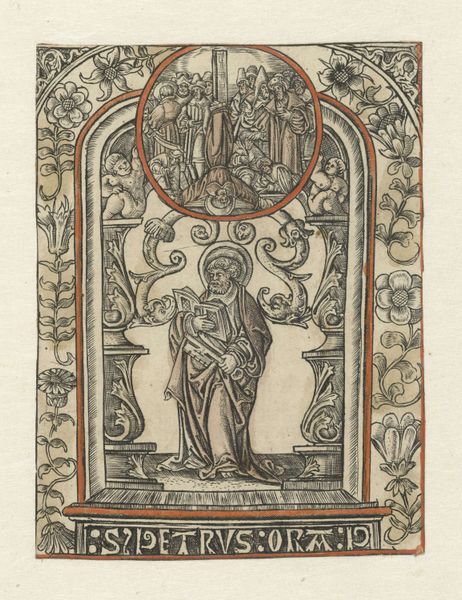
drawing, print, etching, ink, engraving
#
drawing
#
allegory
#
pen drawing
#
mechanical pen drawing
# print
#
pen illustration
#
etching
#
old engraving style
#
figuration
#
ink line art
#
11_renaissance
#
ink
#
line
#
northern-renaissance
#
engraving
Dimensions: height 167 mm, width 101 mm
Copyright: Rijks Museum: Open Domain
Curator: This is "Saturn Devouring One of His Children" a striking engraving by René Boyvin dating back to the late 16th century. It's currently held here at the Rijksmuseum. What’s your initial response to this image? Editor: Visually, it’s quite unsettling. There’s a formal quality, a kind of Renaissance classicism in the architectural structure. But that’s starkly contrasted with the act of infanticide. It’s unsettlingly balanced, almost decorative, despite the grotesque subject matter. Curator: Precisely. The engraving is part of a broader visual culture in 16th-century Europe grappling with humanist interpretations of classical mythology. Saturn, or Cronus, devouring his children, is an ancient myth, and Boyvin uses the visual vocabulary of the time to frame it, quite literally. Editor: So the clean lines and detailed rendering serve not just to illustrate but also to almost…sanction? To frame this brutal myth within the accepted aesthetic norms of the era? I see it raising questions about power and control. Saturn, the patriarchal figure, attempting to secure his reign through violence, feels incredibly relevant even now. Curator: Absolutely. Boyvin's imagery plays on contemporary anxieties around dynastic succession and political power struggles that shaped European societies. The composition also invokes a sense of fate—a sense that this horror is playing out on the world's stage due to unavoidable truths. The original Greek myths served the cultural purpose of justifying such things! Editor: It speaks to the anxieties and the fragility of societal structures. And there is a discomfort to the composition, in that a nude goddess, representing fertility, is perched in a design showcasing destruction, it hints at deeper anxieties present. How much are the classical roots of our culture linked to patterns of oppression? This piece compels us to face that heritage. Curator: Well said, seeing how mythological imagery can shape a culture can provide deep lessons. It is a compelling example of how Renaissance artists repurposed classical tales to make sense of their own tumultuous present. Thank you for your thoughts. Editor: And thank you. It is through reflecting on history that we find the future!
Comments
No comments
Be the first to comment and join the conversation on the ultimate creative platform.
